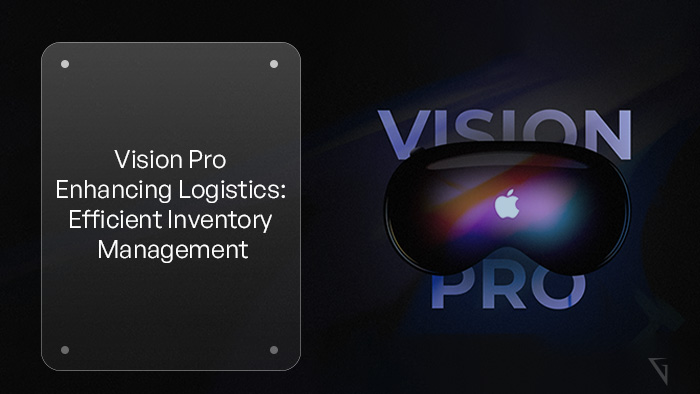

In the fast-paced world of logistics and warehousing, efficient inventory management and accurate product tracking are critical for streamlined operations and customer satisfaction. Apple Vision Pro, with its advanced capabilities in computer vision and augmented reality, is revolutionizing the way logistics companies and warehouses handle inventory and track products. This article explores the significant role of Vision Pro in improving logistics and warehousing processes, leading to enhanced efficiency, reduced costs, and improved customer experiences.
Vision Pro enables real-time inventory tracking by utilizing its computer vision capabilities. With the help of cameras and smart devices, logistics companies can accurately monitor inventory levels, locations, and movements throughout the warehouse. This real-time visibility eliminates manual counting and reduces the risk of errors, ensuring optimal inventory control.
By leveraging Vision Pro, warehouses can implement automated inventory replenishment systems. Computer vision algorithms can detect low stock levels and trigger automated orders, ensuring that products are replenished in a timely manner. This automated process reduces the risk of stockouts and improves inventory turnover rates.
Vision Pro can analyze and optimize shelf space within the warehouse. By using computer vision algorithms, logistics companies can identify underutilized or overcrowded areas and make informed decisions to optimize the allocation of products. This optimization maximizes storage capacity, minimizes wastage, and improves overall warehouse efficiency.
Vision Pro simplifies product tracking through barcode and QR code scanning. With the built-in capabilities to recognize and interpret these codes, logistics personnel can quickly scan and update product information, such as batch numbers, expiry dates, and destination details. This streamlined tracking process improves accuracy and expedites order fulfillment.
Vision Pro enhances package and parcel identification through visual recognition. By analyzing unique visual features, such as shape, color, and size, Vision Pro can accurately identify and track individual packages and parcels throughout the logistics chain. This advanced tracking capability ensures efficient sorting, routing, and delivery of shipments.
With Vision Pro, logistics companies can leverage geolocation data and route optimization algorithms to enhance product tracking. By integrating Vision Pro with GPS technologies, real-time tracking of shipments is made possible. Route optimization algorithms analyze traffic conditions, delivery schedules, and customer preferences, leading to more efficient and timely deliveries.
Vision Pro significantly improves operational efficiency in logistics and warehousing. By automating inventory management, optimizing shelf space, and streamlining product tracking, companies can reduce manual errors, save time, and minimize operational costs.
Efficient inventory management and accurate product tracking translate to improved customer experiences. With Vision Pro, logistics companies can provide real-time updates on shipments, minimize delays, and ensure the accurate delivery of products. This level of transparency and reliability enhances customer satisfaction and loyalty.
Vision Pro generates valuable data on inventory levels, product movement patterns, and delivery performance. Logistics companies can analyze this data to identify trends, make data-driven decisions, and optimize their supply chain processes. This data-driven approach leads to improved forecasting, reduced stock holding, and better overall operational planning.
Integrating Vision Pro with existing warehouse management systems and logistics platforms may present technical challenges. Companies must carefully plan the integration process to ensure seamless compatibility and data synchronization.
As with any advanced technology, data privacy and security should be prioritized. Logistics companies must implement robust security measures to protect sensitive inventory and customer information captured by Vision Pro.
Successfully implementing Vision Pro in logistics and warehousing requires proper training and adoption by staff. Companies should invest in training programs to familiarize employees with the technology and ensure its optimal utilization.
Apple Vision Pro has emerged as a game-changer in the logistics and warehousing industry, revolutionizing inventory management and product tracking. Its capabilities in real-time inventory tracking, automated replenishment, barcode scanning, package identification, and geolocation tracking offer immense benefits for logistics companies. By leveraging Vision Pro, businesses can achieve improved operational efficiency, enhanced customer experiences, and data-driven decision-making. While challenges exist in terms of integration, privacy, and training, the potential for streamlined logistics and warehousing processes makes Vision Pro a compelling tool for the industry.
OpenAI DevDay showcases the latest AI innovations, pushing technology’s boundaries in an ever-evolving landscape.
Explore the top 10 database types for software projects, their unique features, and which one…
Explore PWAs: Your FAQs Guide to Integrating Camera, Geolocation & Device APIs. Harness native features…
General Understanding of PWAs and SEO 1. What is a Progressive Web App (PWA)? A…
Understanding Offline-First Approach Basics 1. What is the concept of "Offline-First" in the context of…
General Overview 1. What are cross-platform frameworks, and how do they relate to Progressive Web…